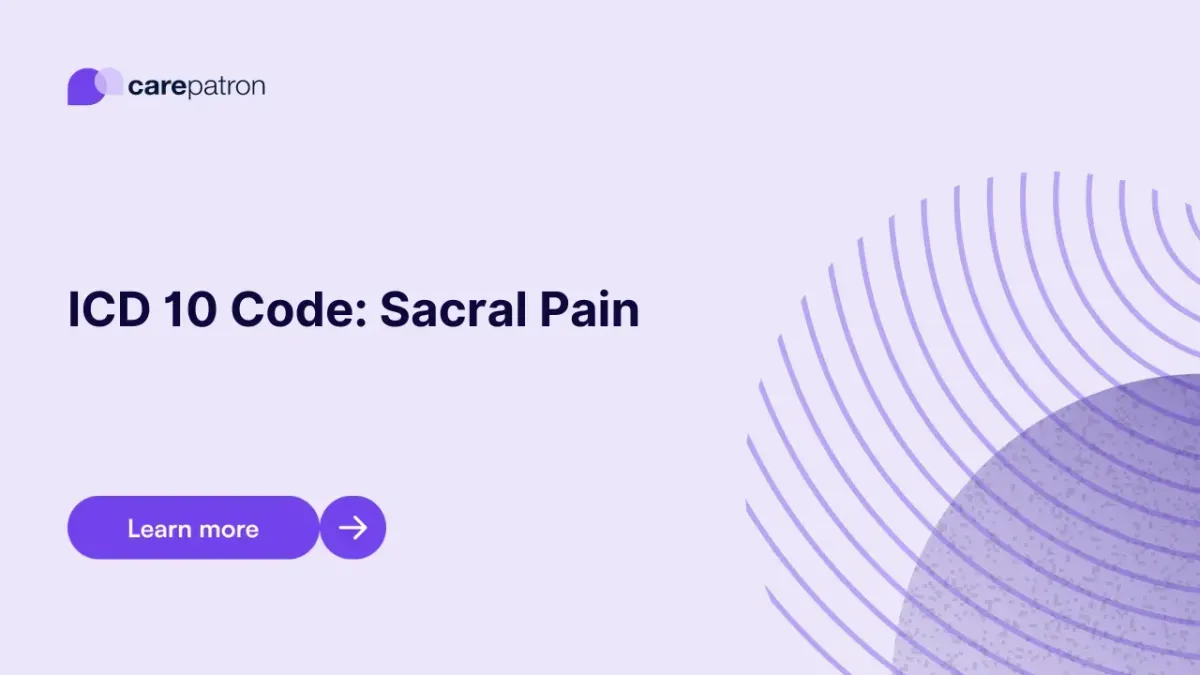What ICD-10 codes are used for sacral pain?
Sacral pain, a discomfort or ache in the sacral region of the spine, is identified and documented using specific sarcal pain ICD codes. Here are commonly used codes for this condition, along with brief clinical descriptions:
- M53.3 - Sacrococcygeal disorders, not elsewhere classified: This code is used when sacral pain does not fit into more specific categories.
- M43.18 - Spondylolisthesis, sacral and sacrococcygeal region: This code is meant to be used on patients confirmed to have spondylolisthesis in the sacral or sacrococcygeal region.
- M43.08 - Spondylolysis, sacral and sacrococcygeal region: This code is meant to be used on patients confirmed to have spondylolysis in the sacral or sacrococcygeal region.
- M48.8X8 - Other specified spondylopathies, sacral and sacrococcygeal region: This is meant to be used on patients confirmed to have types of spondylopathies in the sacral or sacrococcygeal region that don't have specific ICD-10-CM codes.
- M53.88 - Other specified dorsopathies, sacral and sacrococcygeal region: This is meant to be used on patients confirmed to have types of dorsopathies in the sacral or sacrococcygeal region that don't have specific ICD-10-CM codes.
- M43.8X8 - Other specified deforming dorsopathies, sacral and sacrococcygeal region: This is meant to be used on patients confirmed to have types of deforming dorsopathies in the sacral or sacrococcygeal region that don't have specific ICD-10-CM codes.
- M54.89 - Other dorsalgia: When sacral pain is part of a broader pain syndrome affecting the spine and is not categorized elsewhere.
- M25.559 - Pain in unspecified hip: If sacral pain radiates to the hip or is unclear in origin, this code may be used.
- M79.669 - Pain in unspecified lower leg: This code can be applied if sacral pain radiates to the lower leg or is ambiguous.
- R52 - Pain, unspecified: When the origin and characteristics of sacral pain are unclear or not otherwise classified, this code may be used.
- G89.21 - Chronic pain due to trauma: Sacral pain persisting due to a past traumatic injury.
- G89.29 - Other chronic pain: This code may be applied when sacral pain is chronic but not due to trauma.

